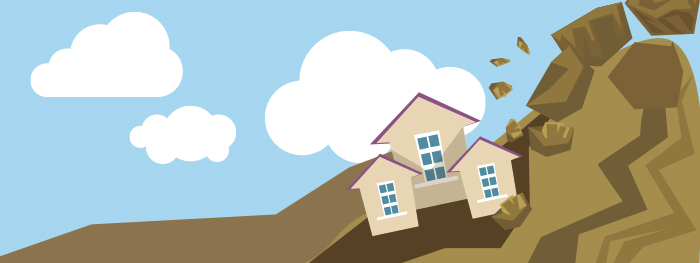Volcanoes, Earthquakes, Landslides, and Sinkholes: Geological Disasters and Your Insurance
In November 2022, Hawaii Island’s Mauna Loa, the earth’s largest active volcano — erupted for the first time in 38 years. Fortunately, it posed little threat to communities because the lava flows occurred in a remote location. Back in 2018, however, a violent eruption of nearby Kilauea destroyed more than 700 homes.1

Volcanic eruptions are unusual in heavily populated areas, but you may be surprised to know that seismologists track 161 potentially active volcanoes in Hawaii, Alaska, and the western United States.2
Naturally, one of the biggest concerns for homeowners near active volcanoes is whether their homes are covered for damage from an eruption. Unfortunately, the answer may be complicated and depends on the individual policy. Damage from lava flows is typically caused by fires, and fire damage would typically be covered by a standard homeowners policy, up to policy limits. However, if the homes are in high-risk lava zones as defined by the U.S. Geological Survey, insurance policies in the area may exclude lava damage, and those that include it can be expensive. Some homeowners may have no coverage at all.
So whether specific damage is covered will depend on what force of nature caused it.
Know Your Policy Perils
Though relatively rare, the potential for volcanic eruptions and other geological disasters illustrates the importance of understanding exactly what is and is not covered under your homeowners policy. Generally, there are two different types of homeowners insurance. A “named perils” policy provides coverage only for certain risks that are listed in the policy, whereas an “all-risks” policy (also called “open perils” or “special perils”) covers all causes of loss, up to policy limits, except those that are specifically excluded in the policy documents.
The most common homeowners policy in the United States, known as Homeowners-3 (HO-3), is an all-risk policy that provides broad coverage for many hazards, including fire, lightning, tornadoes, wind storms, hail, explosions, smoke, vandalism, theft, falling objects, and water damage, among others. However, floods, sewer backups, and earth movement — such as earthquakes, landslides, and sinkholes — are typically excluded from HO-3 policies and would require separate coverage.
Moving Earth
Earthquake policies are available from private insurers and, in California, through a state-run private-public partnership called the California Earthquake Authority (CEA). Policies typically carry a deductible ranging from 2% to 20% of the structure’s replacement value (up to 25% in California). Although California has traditionally had the highest earthquake risk, 42% of U.S. states have a reasonable chance of experiencing a damaging earthquake. Some areas of the country that are far from major fault lines, particularly in Oklahoma, are experiencing increased seismic activity due to oil drilling through hydraulic fracturing, commonly known as fracking.3
Earthquake policies and standard homeowners policies do not cover damage from landslides or mudslides — which are landslides involving saturated ground. These policies also do not cover damage from mudflows, essentially a river of mud that would generally be covered under a separate flood insurance policy. (For insurance purposes, the difference between a mudslide and a mudflow is that a mudslide is mostly solid earth or rock that moves downward, whereas a mudflow is mostly liquid.) You may be able to buy a Difference in Conditions policy, which typically provides all-in-one coverage for landslides, mudfows, earthquakes, and floods.4
Sinkholes are another form of earth movement that is typically excluded from standard homeowners policies. A sinkhole is a collapsed land feature that is formed when running water collects under the surface, dissolving soluble bedrock over time. Sinkholes can be caused by natural forces or by human activity such as groundwater pumping or construction work. A slow or sudden sinkhole collapse can range in size and severity from a few feet to many acres wide and more than 100 feet deep.
Damage from sinkholes occurs most often in Florida, Tennessee, Texas, Alabama, Missouri, Kentucky, and Pennsylvania. In some high-risk states, coverage may be available at an additional cost, either as an endorsement to a property insurance policy or as a stand-alone policy. Florida and Tennessee insurers are required to offer optional sinkhole coverage.5
Gauge Your Risk
Maps produced by the U.S. Geological Survey may help you to assess the likelihood of damage from volcanic eruptions, earthquakes, landslides, sinkholes, and other geologic hazards in your area. You may want to read your insurance documents carefully to find out whether these or any other unusual perils are covered or excluded by your particular homeowners policy. Call your insurance professional if you have any questions about your coverage.